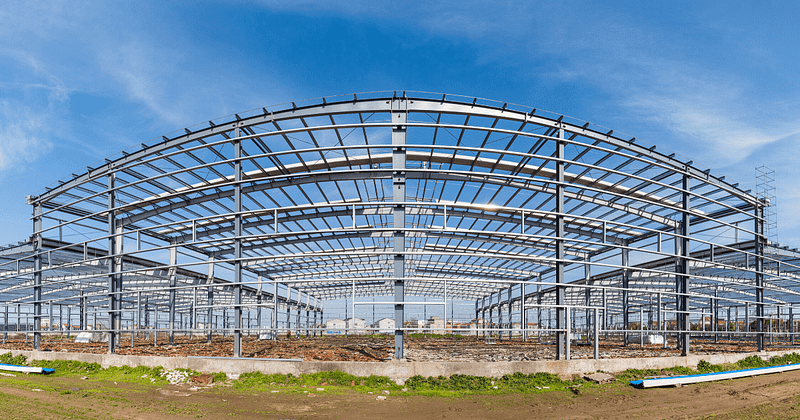
Construction projects demand materials that offer strength, durability, and reliability. Among various options, IS 2062 E250BR plates have emerged as a popular choice for structural steel applications due to their excellent mechanical properties and chemical composition. In this article, we will explore why IS 2062 E250BR plates are preferred in construction, dive into their mechanical properties, chemical composition, and also understand the IS 2062 E250BR equivalent material to help you make an informed decision for your next project.
What is IS 2062 E250BR?
IS 2062 is an Indian Standard that specifies the requirements for hot-rolled carbon steel plates, sheets, and strips used in structural applications. The E250BR grade specifically refers to a structural steel grade with a minimum yield strength of 250 MPa, designed to be tough, weldable, and resistant to brittle fracture.
-
IS 2062 E250BR Plates are widely used in bridges, buildings, heavy vehicles, and construction equipment due to their reliable performance.
-
The “BR” designation signifies that these plates are made with a brittle fracture-resistant quality, making them suitable for critical structural applications where safety is paramount.
Why Choose IS 2062 E250BR Plates for Construction Projects?
Choosing the right material for construction is crucial as it affects the overall stability, longevity, and safety of the structure. Here’s why IS 2062 E250BR plates stand out:
1. High Strength with Adequate Ductility
IS 2062 E250BR plates offer a minimum yield strength of 250 MPa, which ensures the steel can withstand substantial loads without permanent deformation. Their ductility allows the steel to absorb energy and deform under stress without cracking, crucial in seismic or dynamic load situations.
2. Excellent Weldability
Construction projects often require joining plates via welding. The IS 2062 E250BR plates have excellent weldability due to controlled chemical composition, reducing the risk of weld defects or post-weld brittleness. This makes them ideal for fabrications requiring reliable joints.
3. Resistance to Brittle Fracture
Safety in construction depends on materials that do not fail suddenly. The “BR” in E250BR stands for brittle fracture resistance, meaning these plates are tested and guaranteed to resist sudden fracture, even under low temperatures and stress.
4. Versatility Across Applications
From bridges to heavy machinery and building frameworks, these plates perform well in various environments, including harsh weather and heavy mechanical stresses, making them highly versatile.
5. Cost-Effective and Readily Available
Compared to higher-grade steels, E250BR plates provide a balance between cost and performance, making them a cost-effective solution without compromising structural integrity.
IS 2062 E250BR Equivalent Material
When selecting materials, it is important to know the equivalent grades internationally or in different standards. This helps in sourcing and comparing materials globally.
-
The IS 2062 E250BR equivalent material is generally compared with ASTM A36 in the US and EN S275 in Europe. These steels offer similar mechanical properties and applications, though IS 2062 E250BR has stricter controls on chemical composition to enhance fracture resistance.
-
Other equivalents sometimes referenced include JIS G3101 SS400 (Japan) and GB/T 700 Q235 (China), but with slight variations in chemical limits and mechanical properties.
| Standard | Equivalent Grade | Yield Strength (MPa) | Application |
|---|---|---|---|
| IS 2062 E250BR | IS 2062 E250BR | 250 | Structural steel plates |
| ASTM A36 | A36 | 250 | Structural steel for construction |
| EN 10025-2 | S275 | 275 | Structural applications |
| JIS G3101 | SS400 | 245-275 | General structural use |
| GB/T 700 | Q235 | 235 | Structural steel |
This table helps engineers and procurement specialists find suitable alternatives or cross-reference standards easily.
IS 2062 E250BR Mechanical Properties
Understanding the mechanical properties of IS 2062 E250BR steel plates helps ensure that the material meets the demands of your construction project.
| Mechanical Property | Typical Value | Description |
|---|---|---|
| Yield Strength | ≥ 250 MPa | The stress at which steel starts to deform permanently. |
| Tensile Strength | 410 – 550 MPa | The maximum stress steel can withstand before failure. |
| Elongation | ≥ 23% | Percentage increase in length before breaking, indicating ductility. |
| Impact Energy (Charpy) | Minimum 27 Joules at 0°C | Ability to absorb energy during sudden impacts, indicating toughness. |
-
The yield and tensile strength ensure that the steel supports high loads and stress.
-
Elongation provides insight into ductility, meaning the steel can flex and bend without cracking.
-
The impact energy indicates fracture toughness, especially critical in cold environments.
IS 2062 E250BR Chemical Composition
The chemical makeup of IS 2062 E250BR steel plates defines their performance in welding, strength, and durability.
| Element | Typical Composition (%) | Purpose/Effect |
|---|---|---|
| Carbon (C) | 0.20 – 0.25 | Controls hardness and strength but too much reduces weldability. |
| Manganese (Mn) | 0.80 – 1.20 | Improves strength, toughness, and hardenability. |
| Phosphorus (P) | ≤ 0.035 | Kept low to avoid brittleness. |
| Sulfur (S) | ≤ 0.035 | Kept low to improve weldability and reduce brittleness. |
| Silicon (Si) | 0.15 – 0.35 | Deoxidizer that improves strength. |
| Copper (Cu) | ≤ 0.55 | Adds corrosion resistance. |
Applications of IS 2062 E250BR Plates in Construction
Due to their favorable properties, IS 2062 E250BR plates are extensively used in:
-
Bridges and Infrastructure: The high strength and fracture resistance are essential for long-span bridges and critical infrastructure components.
-
Building Frames: Providing structural support in high-rise buildings, industrial complexes, and commercial projects.
-
Heavy Equipment: Fabrication of construction machinery frames and parts.
-
Shipbuilding: Used in hulls and decks due to toughness and resistance to harsh marine environments.
-
Pressure Vessels and Tanks: Where strength and weldability are vital.
Advantages Over Other Structural Steels
-
Better Fracture Toughness: Unlike some structural steels prone to brittle failure, E250BR’s resistance to fracture enhances safety.
-
Consistent Quality: Indian standards enforce strict controls on composition and testing, ensuring uniformity.
-
Cost Savings: The combination of performance and affordability makes it economical compared to high-grade alloys.
Conclusion
When it comes to structural steel plates for construction, IS 2062 E250BR stands as a reliable, high-performance option. Its mechanical properties, chemical composition, and brittle fracture resistance ensure that it meets the rigorous demands of modern construction projects. The availability of equivalent grades worldwide also helps engineers find matching alternatives without compromising quality.



